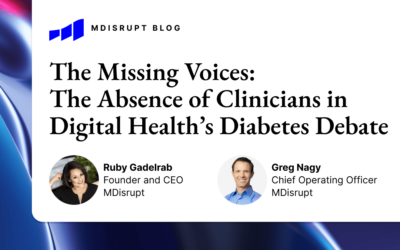The COVID-19 pandemic has played out with unexpected twists and turns. The truth is, with a novel infection such as this one, we have to learn as we go along. This has been apparent as we’ve watched public health agencies, state and federal governments and essential businesses respond to the pandemic every step of the way. This is also true for how we track the infection and its immunity.
Employers need guidance on COVID-19 testing. Companies are asking who should we test, when and how often should we test, what do we do with the results and, what kind of testing should we use?
Types of testing for COVID-19
It is important to understand how we test for COVID-19 infection and how we test for presumptive immunity to the infection. There are two different types of tests – diagnostic tests and antibody tests.
- A diagnostic test can show if you have an active coronavirus infection and should take steps to quarantine or isolate yourself from others. Currently there are two types of diagnostic tests – molecular (RT-PCR) tests that detect the virus’s genetic material, and antigen tests that detect specific proteins on the surface of the virus.
- An antibody test looks for antibodies that are made by the immune system in response to a threat, such as a specific virus. Antibodies can take several days or weeks to develop after you have an infection and may stay in your blood for several weeks after recovery. Because of this, antibody tests should not be used to diagnose an active coronavirus infection. At this time researchers do not know if the presence of antibodies means that you are immune to the coronavirus in the future.

The FDA is also tracking new diagnostic tests available with alternative methods and benefits.
- Rapid, point-of-care diagnostic tests use a mucus sample from the nose or throat but can be analyzed at the doctor’s office or clinic where the sample is collected and results may be available in minutes. These may be molecular or antigen tests.
- At-home collection tests are prescribed by a doctor but allow the patient to collect the sample at home and send it directly to the lab for analysis.
- Saliva tests allow a patient to spit into a tube rather than get their nose or throat swabbed. Saliva tests may be more comfortable for some people and may be safer for health care workers who can be farther away during the sample collection.
Reliability of these tests have improved and whereas symptomatic testing is usually paid for by medical insurance carriers, there are significant gaps in coverage for other types of testing (see below). Testing for asymptomatic employees (and dependents) is usually not covered. Guidance on diagnostic testing has shifted over the past several months in the United States as more testing becomes available. Most of this guidance, notably, is intended for health care professionals.
The guidance and use of antibody (immunity) testing is still evolving. There have been more questions around reliability of these tests and the dust has not settled on how or whether employers should leverage antibody (presumptive immunity) testing.
What does the sensitivity of a Covid-19 test mean?
Sensitivity measures how often a test correctly generates a positive result for people who have the condition that’s being tested for also known as the “true positive” rate.
A test that’s highly sensitive for current COVID-19 virus infection will flag almost everyone who currently has the virus and not generate many false-negative results.
For example: a test with 90% sensitivity will correctly return a positive result for 90% of people who currently have the virus, but will return a negative result — a false-negative — for 10% of the people who currently have the virus and should have tested positive.
What does the specificity of a Covid-19 test mean?
Specificity measures a test’s ability to correctly generate a negative result for people who don’t have the condition that’s being tested for also known as the “true negative” rate.
A high-specificity test for the COVID-19 virus will correctly rule out almost everyone who currently doesn’t have the virus and won’t generate many false-positive results.
For example: a test with 90% specificity will correctly return a negative result for 90% of people who currently don’t have the virus, but will return a positive result — a false-positive — for 10% of the people who currently don’t have the virus and should have tested negative.
Testing for COVID-19 infection in the workplace
It should be noted that much of the return to work preparedness and business continuity planning involves making adjustments to workplaces, operating procedures, administrative protocols and the requirements for work-from-home versus onsite work. The Occupational Safety and Health Administration (OSHA) points out that employers should continue to implement the basic hygiene, social distancing, workplace controls and flexibilities, and employee training described in this guidance in ways that reduce the risk of workplace spread of COVID-19, including by asymptomatic and pre-symptomatic individuals.
In the OSHA Guidance to Returning to Work [4045-06 2020] employers may consider implementing strategies to reduce risks to the safety and health of workers and workplaces from COVID-19 that include conducting diagnostic testing. “Neither the OSH Act nor OSHA standards prohibit employer testing for diagnostic testing, if applied in a transparent manner applicable to all employees (i.e., non-retaliatory)” the guidance affirms.
Because of the limitations of current testing capabilities, employers should act cautiously on negative test results. OSHA is quick to point out that employers should not presume that individuals who test negative for COVID-19 infection present no hazard to others in the workplace.
OSHA also provides guidance and resources for employers and employees on the control and prevention of COVID-19 by industry. This guidance applies to all workers and employers, while other sections focus on those at lower risk of exposure and those with increased risk of exposure, including workers involved in:
- Airline operations
- Border protection and transportation security
- Business travelers
- Construction
- Correctional facility operations
- Dentistry
- Emergency response and public safety
- Environmental (i.e., janitorial) services
- Farmworkers (developed in partnership with CDC)
- Healthcare
- In-home repair services
- Laboratories
- Manufacturing (developed in partnership with CDC)
- Meat and poultry processing (developed in partnership with CDC)
- Postmortem care
- Retail operations
- Solid waste and wastewater management
Testing asymptomatic employees for infection
According to the May 2020 CDC Activities and Initiatives Supporting the COVID-19 Response and the President’s Plan for Opening America Up Again, testing of asymptomatic individuals is a growing consideration as the role of asymptomatic and subclinical infections in transmission becomes more apparent.
Emerging evidence suggests that asymptomatic infections may play an important role in the epidemiology of the disease. Nevertheless, it is important to define the circumstances where testing asymptomatic persons is likely to be helpful in controlling the COVID-19 pandemic.
The CDC provides further clarification that effective testing programs will focus on (1) persons with an increased likelihood of infection and (2) settings with particularly vulnerable populations, including but not limited to the following:
- Contacts of known (symptomatic or asymptomatic) cases. This may include testing of contacts going back one to two weeks before the onset of symptoms, particularly contacts who work with vulnerable populations.
- Staff of long-term care facilities. Periodic testing and sentinel surveillance in these settings may serve to detect outbreaks early in this setting, where devastating outbreaks are known to occur and to be associated with high rates of asymptomatic infection.
- Other healthcare facility workers and first responders. Healthcare facilities may consider testing staff periodically, starting with staff in high traffic, high risk areas such as emergency departments.
Workforce: CDC guidance on “vulnerable individuals”
As workplaces consider re-opening it is particularly important to keep in mind that some employees are at higher risk for severe illness from COVID-19. These vulnerable workers include individuals over age 65 and those with underlying medical conditions (regardless of age). Such underlying conditions include, but are not limited to, chronic lung disease, moderate to severe asthma, hypertension, severe heart conditions, weakened immunity, severe obesity, diabetes, liver disease, and chronic kidney disease that requires dialysis. Vulnerable workers should be encouraged to self-identify, and employers should avoid making unnecessary medical inquiries. Employers should take particular care to reduce vulnerable workers’ risk of exposure to COVID-19, while making sure to be compliant with relevant ADA regulations.
OSHA recommends that employers should identify workers who may be at increased susceptibility for COVID-19 infection or complications and consider adjusting their work responsibilities or locations to minimize exposure. Other flexibilities, if feasible, can help prevent potential exposures among workers who have diabetes, heart or lung issues, or other immunocompromising health conditions.
Serology testing for immunity to COVID-19
The CDC recently acknowledged that serologic testing may play a role in a back-to-work strategy provided it can be shown that serologic testing can reliably infer immunity. This immunity may not need to be absolute: protection against severe infection may be enough even if immunity against reinfection isn’t reliable or durable. Some employers, and some industries in particular are counting on serologic testing for immunity.
While there appears to be considerable public optimism that serologic testing will allow return to work without the need for PPE or other precautions, there are many unknowns at this early date that limit implementation of serology for this purpose.
There is a need for high-level consensus on the role of serologic testing in a back-to-work policy. Consensus is also needed on a plan for how to provide documentation of that immunity, be it through federal- or state-based immunity registries, digital proof-of-immunity, or physical documentation such as “immunity certificates”. Despite these limitations, continued interest in the use of serologic testing in a back-to-work policy is likely.
In its most recent guidance, however, CDC Interim Guidance said that antibody test results “should not be used to make decisions about returning persons to the workplace.”
In light of this CDC guidance, under the ADA (Americans With Disabilities Act) an employer may not require antibody testing before permitting employees to re-enter the workplace. An antibody test constitutes a medical examination under the ADA. An antibody test at this time does not meet the ADA’s “job related and consistent with business necessity” standard for medical examinations or inquiries for current employees. Therefore, requiring antibody testing before allowing employees to re-enter the workplace is not allowed under the ADA.
Of note the EEOC acknowledges that an antibody test is different from a test to determine if someone has an active case of COVID-19 (i.e., a viral test). The EEOC has already stated that diagnostic COVID-19 viral tests are permissible under the ADA. The EEOC will continue to closely monitor CDC’s recommendations, and could update this discussion in response to changes in CDC’s recommendations.
What’s covered?
As of this writing, most insurance carriers will cover COVID-19 testing under certain circumstances and employers should factor costs into their plans to include these tests in business continuity planning and execution. Employers should be sure to contact their insurance carrier(s) and understand exactly what is and what is not covered under each of their health plans. Insurance testing for coverage will almost certainly be a moving target, so employers should plan to monitor insurance carrier communications and postings on a regular basis.
Medical insurers typically don’t cover medical services that aren’t ordered by a health care professional, or that aren’t considered medically necessary in fully insured, or through medical insurance administered self-funded plans. As an example, pre-employment testing for job requirements are usually paid by the employer themselves. Some insurers and health plan administrators explicitly exclude surveillance testing for their members.
According to a recent AXIOS article, UnitedHealthcare, for example, says that “we will cover medically necessary COVID-19 testing at no cost-share…when ordered by a physician or health care professional.”
- BlueCross BlueShield of South Carolina will cover diagnostic tests “when ordered by an attending health care provider and provided at the point-of-care for individuals who are symptomatic and are concerned about infection.”
- Blue Cross and Blue Shield of Kansas City will cover both diagnostic and antibody tests “with no cost share if you have symptoms consistent with COVID-19 and your physician orders the test.”
- BlueCross BlueShield of Mississippi says it won’t cover tests that are “not medically necessary,” which includes tests for asymptomatic people as part of public health monitoring efforts or screenings for returning to work.
Not every insurer has added coverage limitations. Aetna, which is owned by CVS, has waived cost-sharing for all diagnostic tests, which “can be done by any approved testing facility.”
Partnering with employers on COVID-19 testing
Employers are interested in partners who can help them deploy, manage and track testing. If new testing technology enables that, it must have the proper regulatory approvals solidly in place. FDA approval is paramount. Healthtech companies or test provider must remember that there are tremendous liabilities attached to all aspects of this testing- companies are looking for demonstrable reliability and sufficient specificity and sensitivity.
Employers need to follow CDC’s and the Occupational Safety and Health Administration (OSHA) guidance for reducing workplace exposure for all employees. All decisions about following these recommendations should be made in collaboration with local health officials and other State and local authorities who can help assess the current level of mitigation needed based on levels of COVID-19 community transmission and the capacities of the local public health and healthcare systems. In addition, specific industries may require more stringent safety precautions. Finally, there may be essential workplaces in which the recommended mitigation strategies are not feasible.
It is important for any test provider to fully appreciate the regulatory landscape that employers face. This is the time to be a true partner.

Ronald S. Leopold, MD, MBA, MPH, Physician Consultant
MDisrupt Advisor and Senior Consultant Specializing in Employee Benefits, Medical Cost Solutions, New Medical Technology
As a credentialed and experienced professional, Dr. Leopold brings credibility and a breadth of knowledge as a consultant, client advocate, and marketplace spokesperson. He is an industry thought leader in employee benefits and health and productivity.
Specialties: Medical Costs, High Cost Claimants, New Medical Technologies, Employee Benefits, Heath and Productivity, Population Health Data Analytics, Global Workforce, Generations in the Workforce, Financial Wellness, Thought Leadership, Public Speaking.
At MDisrupt we can help, If you are an employer wanting to deploy back to work protocols and would like expert guidance – please contact us.
If you are a test developer wanting to access the Employer market we can help you understand the strategies and protocols necessary to be successful.
Talk to us—we can help.



